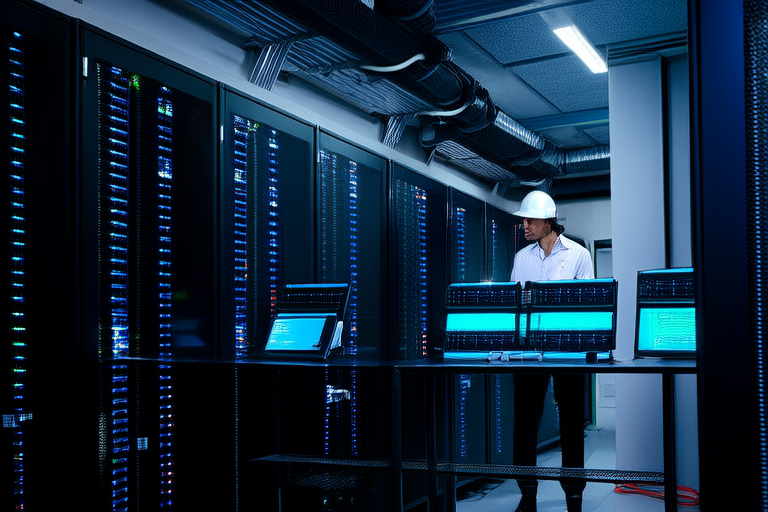Introduction
In the rapidly evolving digital era, cloud computing and edge computing have emerged as two cornerstone technologies reshaping how data is processed, stored, and utilized. Cloud computing provides centralized infrastructure for scalable storage and computation, enabling businesses to access resources on demand without heavy upfront investments. Meanwhile, edge computing decentralizes data processing by bringing computation closer to the source of data generation, reducing latency and enhancing real-time decision-making capabilities. While each technology has its unique strengths, their integration creates a synergistic relationship that is transforming industries and driving innovation across the globe.
Understanding Cloud Computing
Cloud computing refers to the delivery of computing services—such as storage, processing power, and applications—over the internet (“the cloud”) rather than relying on local servers or personal devices. This model offers several key benefits, including cost efficiency, scalability, and flexibility. Organizations can scale their resources up or down based on demand, avoiding the need for significant capital expenditures on hardware. Additionally, cloud platforms provide robust tools for collaboration, analytics, and automation, empowering businesses to innovate faster.
The adoption of cloud computing spans virtually every industry. In finance, banks leverage cloud solutions for secure transaction processing and customer data management. Retailers use cloud-based platforms to manage inventory, personalize customer experiences, and optimize supply chains. Healthcare providers rely on cloud systems to store patient records securely and facilitate telemedicine services. The widespread use of cloud computing underscores its role as a foundational technology in modern business operations.
Exploring Edge Computing
Edge computing shifts computational tasks away from centralized data centers to locations closer to where data is generated, such as IoT devices, sensors, or local servers. By processing data at the “edge” of the network, this approach minimizes delays caused by transmitting information to distant cloud servers. This reduction in latency is critical for applications requiring real-time responses, such as autonomous vehicles, industrial automation, and smart cities.
Beyond speed, edge computing enhances reliability by ensuring continuous operation even when connectivity to the cloud is disrupted. For example, in remote areas with limited internet access, edge devices can perform essential functions independently. Furthermore, edge computing reduces bandwidth usage by filtering and analyzing data locally before sending only relevant insights to the cloud. This capability not only lowers costs but also improves overall system efficiency.
The Synergy Between Cloud and Edge
The combination of cloud and edge computing creates a powerful ecosystem that leverages the strengths of both paradigms. Cloud computing excels in handling large-scale data storage, complex analytics, and long-term processing tasks, while edge computing specializes in delivering low-latency, real-time insights. Together, they form a complementary architecture that supports diverse workloads and optimizes resource utilization.
This synergy enables organizations to achieve greater efficiency and scalability. For instance, an IoT deployment might use edge devices to preprocess sensor data locally, identifying anomalies or patterns in real time. The summarized results are then transmitted to the cloud for deeper analysis, machine learning model training, or archival purposes. Such an approach ensures rapid response times at the edge while harnessing the cloud’s vast computational power for more intensive tasks.
Moreover, the integration fosters innovation by enabling new use cases that would be impractical with either technology alone. Applications like augmented reality, predictive maintenance, and intelligent traffic management rely on the seamless interplay between edge and cloud to deliver transformative outcomes.
Real-World Applications
The fusion of cloud and edge computing is already driving significant advancements across various sectors:
- Internet of Things (IoT): Smart homes, factories, and cities depend on edge devices to process sensor data locally, ensuring quick reactions to environmental changes. Simultaneously, the cloud aggregates and analyzes data from multiple sources to uncover broader trends and optimize system performance.
- Healthcare: Wearable medical devices monitor patients’ vital signs in real time using edge computing, alerting caregivers to emergencies immediately. The collected data is later uploaded to the cloud for comprehensive health tracking and research.
- Autonomous Vehicles: Self-driving cars require split-second decision-making, which is facilitated by onboard edge processors. At the same time, the cloud plays a crucial role in updating navigation maps, improving AI algorithms, and coordinating fleet operations.
- Retail: Brick-and-mortar stores utilize edge-enabled cameras and sensors to analyze customer behavior and manage inventory in real time. The cloud supports advanced analytics, personalized marketing campaigns, and supply chain optimization.
These examples illustrate how the cloud-edge partnership addresses specific challenges within each domain, unlocking unprecedented levels of efficiency and intelligence.
Challenges and Considerations
Despite its promise, the integration of cloud and edge computing presents several challenges that must be addressed:
- Security: Distributing data processing across multiple nodes increases the attack surface, making it harder to protect sensitive information. Robust encryption, authentication protocols, and regular audits are essential to mitigate risks.
- Integration Complexity: Seamlessly connecting edge devices with cloud platforms requires sophisticated middleware and standardized communication protocols. Organizations may face technical hurdles during implementation.
- Infrastructure Requirements: Deploying edge computing often involves investing in specialized hardware and maintaining distributed networks, which can be costly and logistically challenging.
- Data Management: Balancing what data stays at the edge versus what gets sent to the cloud demands careful planning to avoid inefficiencies or bottlenecks.
Addressing these issues will require collaboration among technology providers, regulatory bodies, and end users to establish best practices and frameworks for successful deployments.
Future Outlook
Looking ahead, the synergy between cloud and edge computing is poised to redefine the digital landscape further. As 5G networks expand, they will enhance connectivity and enable even faster data transfer between edge devices and the cloud. This advancement will pave the way for ultra-low-latency applications, such as immersive virtual reality experiences and precision robotics.
Emerging trends like federated learning—a technique that allows machine learning models to be trained across decentralized devices without sharing raw data—are expected to gain traction. Similarly, the rise of edge AI will empower devices to make smarter decisions autonomously, reducing reliance on constant cloud connectivity.
Long-term, the convergence of cloud and edge computing will likely lead to the development of fully integrated ecosystems capable of supporting increasingly complex and dynamic workflows. These systems will underpin the next generation of smart technologies, driving economic growth and societal progress.
Conclusion
The integration of cloud and edge computing represents a paradigm shift in how we approach data processing and digital transformation. Individually, these technologies offer remarkable capabilities; together, they create a synergistic framework that amplifies their impact. From revolutionizing IoT and healthcare to powering autonomous vehicles and smart cities, the combined potential of cloud and edge computing is vast and far-reaching.
However, realizing this potential requires addressing challenges related to security, integration, and infrastructure. With continued innovation and collaboration, the cloud-edge synergy promises to unlock new opportunities and shape the future of technology. As industries embrace this transformative duo, the possibilities for enhanced efficiency, scalability, and creativity are boundless.


